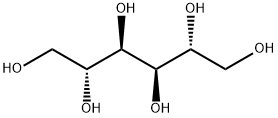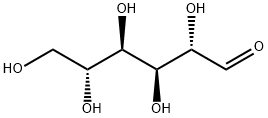D-Mannitol
- CAS No.
- 69-65-8
- Chemical Name:
- D-Mannitol
- Synonyms
- Hexitol;Cordycepic acid;MANNITOL GRANULAR;MANNITE;Mannitol CRS;mannopyranose;mannitose;d-mannito;Bronchitol;Resectisol
- CBNumber:
- CB7720972
- Molecular Formula:
- C6H14O6
- Molecular Weight:
- 182.17
- MDL Number:
- MFCD00064287
- MOL File:
- 69-65-8.mol
- MSDS File:
- SDS
| Melting point | 167-170 °C(lit.) |
|---|---|
| Boiling point | 295°C |
| alpha | 141 º (c= USP-directives) |
| Density | 1.52 |
| refractive index | 1.3330 (estimate) |
| Flash point | 290-295°C/3.5mm |
| storage temp. | 2-8°C |
| solubility | H2O: 1 M at 20 °C, clear, colorless |
| form | Crystalline Powder |
| pka | 13.5(at 18℃) |
| color | White |
| PH | 5.0-6.5 (25℃, 1M in H2O) |
| Odor | at 100.00 %. odorless |
| Odor Type | odorless |
| optical activity | [α]25/D +23.3 to +24.3°(lit.) |
| Water Solubility | soluble |
| λmax |
λ: 260 nm Amax: 0.04 λ: 280 nm Amax: 0.04 |
| Merck | 14,5745 |
| BRN | 1721898 |
| Stability | Stable. Combustible. Incompatible with strong oxidizing agents. |
| InChIKey | FBPFZTCFMRRESA-KVTDHHQDSA-N |
| LogP | -3.262 (est) |
| Substances Added to Food (formerly EAFUS) | MANNITOL |
| SCOGS (Select Committee on GRAS Substances) | Mannitol |
| CAS DataBase Reference | 69-65-8(CAS DataBase Reference) |
| EWG's Food Scores | 1 |
| FDA UNII | 3OWL53L36A |
| NCI Drug Dictionary | Osmitrol |
| NIST Chemistry Reference | D-Mannitol(69-65-8) |
| EPA Substance Registry System | D-Mannitol (69-65-8) |
SAFETY
Risk and Safety Statements
| Symbol(GHS) |  GHS07 |
|||||||||
|---|---|---|---|---|---|---|---|---|---|---|
| Signal word | Warning | |||||||||
| Hazard statements | H302+H312+H332 | |||||||||
| Precautionary statements | P280 | |||||||||
| Hazard Codes | Xi | |||||||||
| Risk Statements | 36/37/38 | |||||||||
| Safety Statements | 24/25-36-26 | |||||||||
| WGK Germany | 2 | |||||||||
| RTECS | OP2060000 | |||||||||
| F | 3 | |||||||||
| Autoignition Temperature | 410 °C | |||||||||
| TSCA | Yes | |||||||||
| HS Code | 29054300 | |||||||||
| Toxicity | LD50 orally in Rabbit: 13500 mg/kg | |||||||||
| NFPA 704 |
|
D-Mannitol price More Price(117)
| Manufacturer | Product number | Product description | CAS number | Packaging | Price | Updated | Buy |
|---|---|---|---|---|---|---|---|
| Sigma-Aldrich | NIST920 | D-Mannitol NIST? SRM? 920 | 69-65-8 | 50g | $752 | 2024-03-01 | Buy |
| Sigma-Aldrich | MX0214 | Mannitol MeetsACSSpecificationsGRACS | 69-65-8 | 3kg | $323 | 2024-03-01 | Buy |
| Sigma-Aldrich | BP1007 | Mannitol British Pharmacopoeia (BP) Reference Standard | 69-65-8 | 1200MG | $223 | 2024-03-01 | Buy |
| Sigma-Aldrich | 63560 | D-Mannitol ACS reagent, for microbiology, ≥99.0% | 69-65-8 | 250g | $54.1 | 2024-03-01 | Buy |
| Sigma-Aldrich | 63560 | D-Mannitol ACS reagent, for microbiology, ≥99.0% | 69-65-8 | 1kg | $177 | 2024-03-01 | Buy |
D-Mannitol Chemical Properties,Uses,Production
Description
Mannitol is a white, crystalline solid consisting of D-mannitol and a small quantity of sorbitol. It is odorless and has a sweet taste. It is soluble in water, very slightly soluble in alcohol, and practically insoluble in most other common organic solvents. It is prepared commercially by catalytic reduction of glucose. Mannitol occurs in small amounts in a variety of foods such as olives, beets, and celery, and in the exudate of certain trees.
Chemical Properties
Mannitol is D-mannitol. It is a hexahydric alcohol related to
mannose and is isomeric with sorbitol.
Mannitol occurs as a white, odorless, crystalline powder, or freeflowing
granules. It has a sweet taste, approximately as sweet as
glucose and half as sweet as sucrose, and imparts a cooling
sensation in the mouth. Microscopically, it appears as orthorhombic
needles when crystallized from alcohol. Mannitol shows
polymorphism.
Originator
Mannitol,MSD,US,1946
Uses
Used with boric acid in the manufacture of dry electrolytic condensers for radio applications; in making artificial resins and plasticizers; in pharmacy as excipient and diluent for solids and liqs; in analytical chemistry for boron determinations; in the manufacture of mannitol hexanitrate. Used in the food industry as anticaking and free-flow agent, flavoring agent, lubricant and release agent, stabilizer and thickener and nutritive sweetener.
Uses
Labelled D-Mannitol (M165000). D-Mannitol is widespread in plants and plant exudates; obtained from manna and seaweeds. D-Mannitol is used in the food industry as anticaking and free-flow agent, flavo ring agent, lubricant and release agent, stabilizer and thickener and nutritive sweetener.
Uses
Used in titrimetric determination of boric acid. inhibitor of norepinephrine and seritonin uptake, treatment of fibromyalgia.
Definition
ChEBI: D-mannitol is the D-enantiomer of mannitol. It has a role as an osmotic diuretic, a sweetening agent, an antiglaucoma drug, a metabolite, an allergen, a hapten, a food bulking agent, a food anticaking agent, a food humectant, a food stabiliser, a food thickening agent, an Escherichia coli metabolite and a member of compatible osmolytes.
Production Methods
Mannitol may be extracted from the dried sap of manna and other natural sources by means of hot alcohol or other selective solvents. It is commercially produced by the catalytic or electrolytic reduction of monosaccharides such as mannose and glucose.
Manufacturing Process
250 g of glucose is dissolved in distilled water to give a solution of 48% concentration. This solution is heated to 65°C and barium hydroxide added in quantity sufficient to make the concentration of the barium hydroxide 0.2 mol/liter. The solution is agitated and maintained at 65°C for 6 hours after the addition of the barium hydroxide. It is then cooled and neutralized to a pH of 6.8 with sulfuric acid. The precipitated barium sulfate is filtered out. A quantity of activated supported nickel catalyst containing 5 g of nickel is added.
The slurry is introduced into a 3-liter rocking autoclave, and hydrogen
admitted to a pressure of 1,500 psi. The autoclave is heated to a temperature
of 150°C in one hour and held at this temperature for 2.5 hours more.
Pressure rises to about 1,800 psi and then declines to about 1,600 during the
hydrogenation. The autoclave is then cooled, emptied, and the catalyst filtered
from the product. The filtrate is then concentrated under vacuum on a hot
water bath to remove a part of the water.
The concentrate is taken up in warm aqueous methanol so adjusted that the
composition of the solvent is 90% methanol/10% water, and the weight of the
solvent is 3 times the weight of the solids in the concentrate. This solution is
cooled to 20°C and held overnight. The mannitol which crystallizes is filtered
out. The filtrate is concentrated on a water bath under vacuum to remove
methanol and adjusted to a water percentage of 16%. The resulting syrup is
viscous, noncrystallizing and nongelling, and analysis shows a PN (Pyridine
Number) of 32 and essentially no reducing sugar, according to US Patent
2,749,371.
brand name
Osmitrol (Baxter Healthcare); Resectisol (B Braun).
Therapeutic Function
Diuretic, Diagnostic aid (kidney function)
General Description
Odorless white crystalline powder or free-flowing granules. Sweet taste.
Air & Water Reactions
Water soluble.
Reactivity Profile
A sugar alcohol. More closely related to carbohydrates than to other polyhydric alcohols [Noller]. Flammable and/or toxic gases are generated by the combination with alkali metals, nitrides, strong reducing agents and strong oxidizing agents.
Hazard
Mildly toxic; mutagen.
Fire Hazard
D-Mannitol is probably combustible.
Pharmaceutical Applications
Mannitol is widely used in pharmaceutical formulations and food
products. In pharmaceutical preparations it is primarily used as a
diluent (10–90% w/w) in tablet formulations, where it is of
particular value since it is not hygroscopic and may thus be used
with moisture-sensitive active ingredients.
Mannitol may be used in direct-compression tablet applications,for which the granular and spray-dried forms are
available, or in wet granulations.Granulations containing
mannitol have the advantage of being dried easily. Specific tablet
applications include antacid preparations, glyceryl trinitrate tablets,
and vitamin preparations. Mannitol is commonly used as an
excipient in the manufacture of chewable tablet formulations
because of its negative heat of solution, sweetness, and ‘mouth
feel’.
In lyophilized preparations, mannitol (20–90% w/w) has been
included as a carrier to produce a stiff, homogeneous cake that
improves the appearance of the lyophilized plug in a vial.A
pyrogen-free form is available specifically for this use.
Mannitol has also been used to prevent thickening in aqueous
antacid suspensions of aluminum hydroxide (<7% w/v). It has been
suggested as a plasticizer in soft-gelatin capsules, as a component of
sustained-release tablet formulations,and as a carrier in dry
powder inhalers.It is also used as a diluent in rapidly
dispersing oral dosage forms.It is used in food applications as
a bulking agent.
Therapeutically, mannitol administered parenterally is used as
an osmotic diuretic, as a diagnostic agent for kidney function, as an
adjunct in the treatment of acute renal failure, and as an agent to
reduce intracranial pressure, treat cerebral edema, and reduce
intraocular pressure. Given orally, mannitol is not absorbed
significantly from the gastrointestinal tract, but in large doses it
can cause osmotic diarrhea;
Biochem/physiol Actions
A sugar alcohol sweet tastant. Used in sweetness inhibition studies.
Safety
Mannitol is a naturally occurring sugar alcohol found in animals
and plants; it is present in small quantities in almost all vegetables.
Laxative effects may occur if mannitol is consumed orally in large
quantities.If it is used in foods as a bodying agent and daily
ingestion of over 20g is foreseeable, the product label should bear
the statement ‘excessive consumption may have a laxative effect’.
After intravenous injection, mannitol is not metabolized to any
appreciable extent and is minimally reabsorbed by the renal tubule,
about 80% of a dose being excreted in the urine in 3 hours.
A number of adverse reactions to mannitol have been reported,
primarily following the therapeutic use of 20% w/v aqueous
intravenous infusions.The quantity of mannitol used as an
excipient is considerably less than that used therapeutically and is
consequently associated with a lower incidence of adverse reactions.
However, allergic, hypersensitive-type reactions may occur when
mannitol is used as an excipient.
An acceptable daily intake of mannitol has not been specified by
the WHO since the amount consumed as a sweetening agent was
not considered to represent a hazard to health.
LD50 (mouse, IP): 14 g/kg
LD50 (mouse, IV): 7.47 g/kg
LD50 (mouse, oral): 22 g/kg
LD50 (rat, IV): 9.69 g/kg
LD50 (rat, oral): 13.5 g/kg
storage
Mannitol is stable in the dry state and in aqueous solutions.
Solutions may be sterilized by filtration or by autoclaving and if
necessary may be autoclaved repeatedly with no adverse physical or
chemical effects.In solution, mannitol is not attacked by cold,
dilute acids or alkalis, nor by atmospheric oxygen in the absence of
catalysts. Mannitol does not undergo Maillard reactions.
The bulk material should be stored in a well-closed container in a
cool, dry place.
Purification Methods
D-Mannitol is crystallised from EtOH, MeOH or H2O and dried at 100o. [Thomson Acta Chem Scand 6 270, 279, 280 1952, Beilstein 1 IV 2841.]
Incompatibilities
Mannitol solutions, 20% w/v or stronger, may be salted out by potassium chloride or sodium chloride.Precipitation has been reported to occur when a 25% w/v mannitol solution was allowed to contact plastic.Sodium cephapirin at 2 mg/mL and 30 mg/mL concentration is incompatible with 20% w/v aqueous mannitol solution. Mannitol is incompatible with xylitol infusion and may form complexes with some metals such as aluminum, copper, and iron. Reducing sugar impurities in mannitol have been implicated in the oxidative degradation of a peptide in a lyophilized formation.Mannitol was found to reduce the oral bioavailability of cimetidine compared to sucrose.
Regulatory Status
GRAS listed. Accepted for use as a food additive in Europe. Included in the FDA Inactive Ingredients Database (IP, IM, IV, and SC injections; infusions; buccal, oral and sublingual tablets, powders and capsules; ophthalmic preparations; topical solutions). Included in nonparenteral and parenteral medicines licensed in the UK. Included in the Canadian List of Acceptable Mon-medicinal Ingredients.
D-Mannitol Preparation Products And Raw materials
Raw materials
Preparation Products
1of2
| Supplier | Tel | Country | ProdList | Advantage | |
|---|---|---|---|---|---|
| Hengshui Haoye Chemical Co.,Ltd. | +86-2102300 +86-18632882519 | hy@chemcoms.com | China | 256 | 58 |
| Hefei TNJ Chemical Industry Co.,Ltd. | 0551-65418684 +8618949823763 | sales@tnjchem.com | China | 25363 | 58 |
| Guangzhou Tosun Pharmaceutical Limited | +8618922120635 | sales@toref-standards.com | China | 1000 | 58 |
| Hebei Mojin Biotechnology Co., Ltd | +8613288715578 | sales@hbmojin.com | China | 12453 | 58 |
| Hebei Yanxi Chemical Co., Ltd. | +8617531190177 | peter@yan-xi.com | China | 5993 | 58 |
| Ouhuang Engineering Materials (Hubei) Co., Ltd | +8617702722807 | admin@hbouhuang.com | China | 343 | 58 |
| Shanghai Daken Advanced Materials Co.,Ltd | +86-371-66670886 | info@dakenam.com | China | 15371 | 58 |
| Henan Tianfu Chemical Co.,Ltd. | +86-0371-55170693 +86-19937530512 | info@tianfuchem.com | China | 21695 | 55 |
| Hangzhou FandaChem Co.,Ltd. | 008657128800458; +8615858145714 | fandachem@gmail.com | China | 9352 | 55 |
| Hefei TNJ Chemical Industry Co.,Ltd. | +86-0551-65418679 +86-18949832763 | info@tnjchem.com | China | 2989 | 55 |
Related articles
- D-Mannitol: Properties and Applications
- D-Mannitol is a non-hygroscopic sugar alcohol with various applications. It has low glycemic index, serves as a sweetener, and....
- Jul 12,2023
- D-Mannitol, a naturally occurring alcohol
- D-Mannitol is a naturally occurring alcohol found in fruits and vegetables and used as an osmotic diuretic. Mannitol is freely....
- May 13,2022
View Lastest Price from D-Mannitol manufacturers
| Image | Update time | Product | Price | Min. Order | Purity | Supply Ability | Manufacturer | |
|---|---|---|---|---|---|---|---|---|
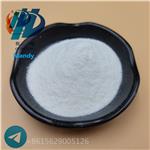 |
2024-04-18 | D-Mannitol
69-65-8
|
US $15.00 / kg | 1kg | 99.912% | 10ton | Ouhuang Engineering Materials (Hubei) Co., Ltd | |
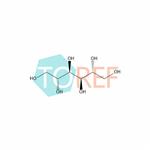 |
2024-04-11 | D-Mannitol(Xylitol EP Impurity C)
69-65-8
|
US $0.00-0.00 / mg | 10mg | 98.95% | 10g/month | Guangzhou Tosun Pharmaceutical Limited | |
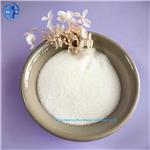 |
2023-11-01 | D-Mannitol
69-65-8
|
US $18.64 / kg | 1kg | 99% | 100kg | Wuhan Han Sheng New Material Technology Co.,Ltd |
-

- D-Mannitol
69-65-8
- US $15.00 / kg
- 99.912%
- Ouhuang Engineering Materials (Hubei) Co., Ltd
-

- D-Mannitol(Xylitol EP Impurity C)
69-65-8
- US $0.00-0.00 / mg
- 98.95%
- Guangzhou Tosun Pharmaceutical Limited
-

- D-Mannitol
69-65-8
- US $18.64 / kg
- 99%
- Wuhan Han Sheng New Material Technology Co.,Ltd





